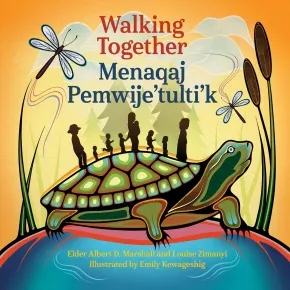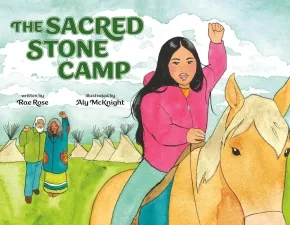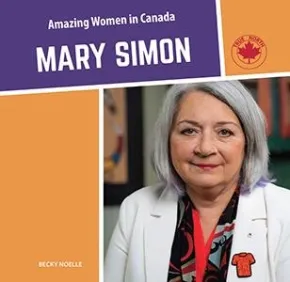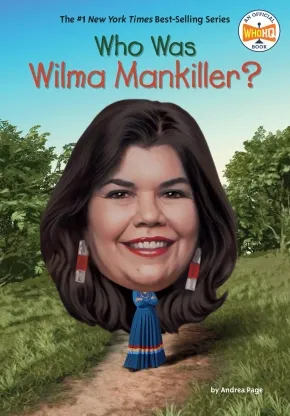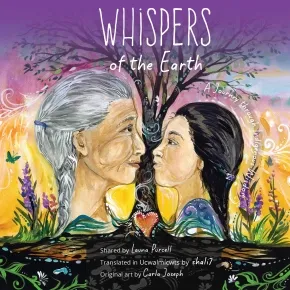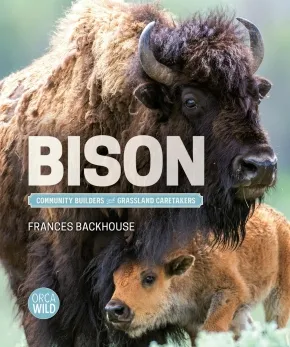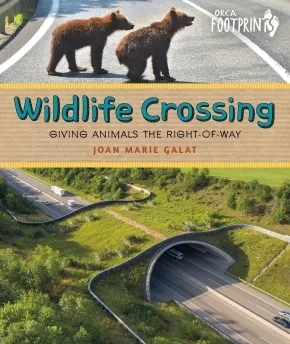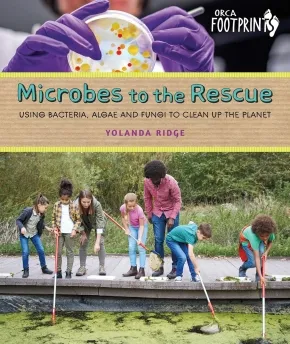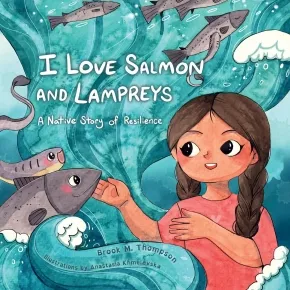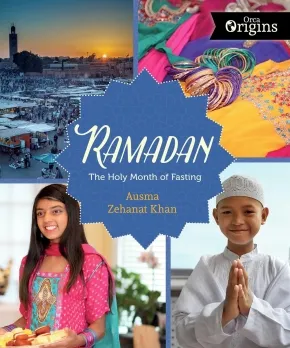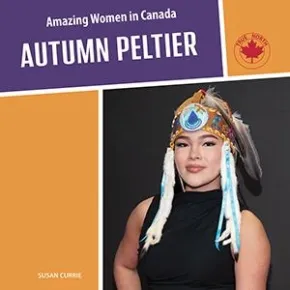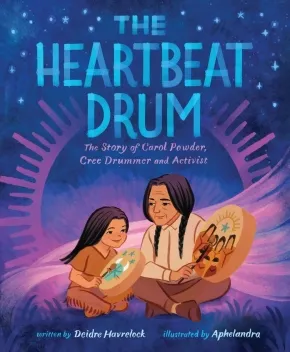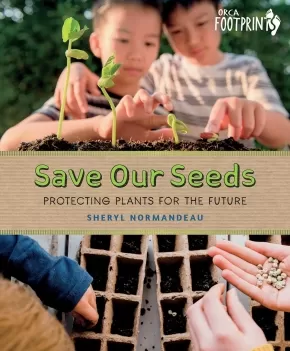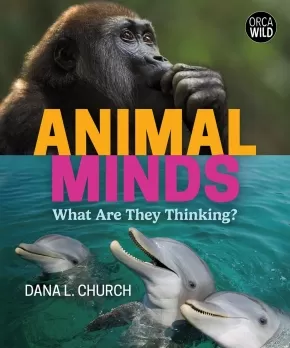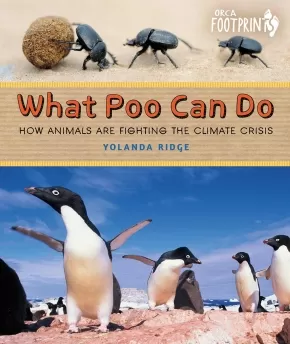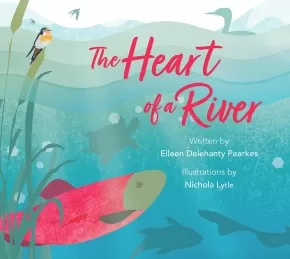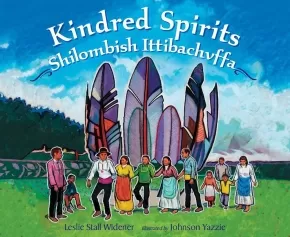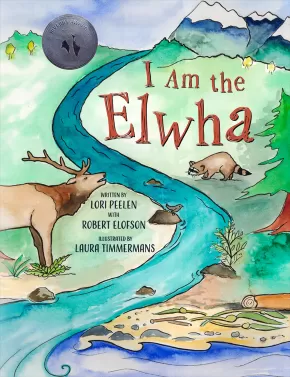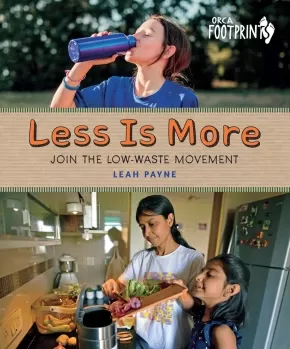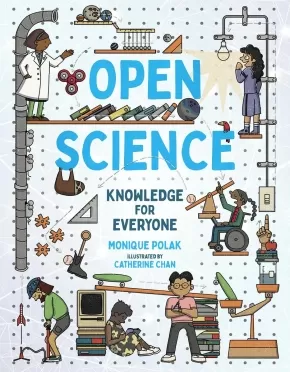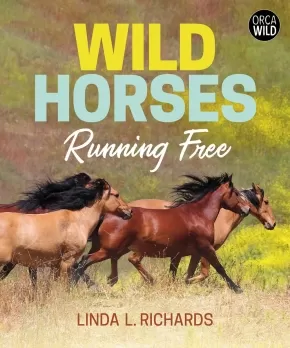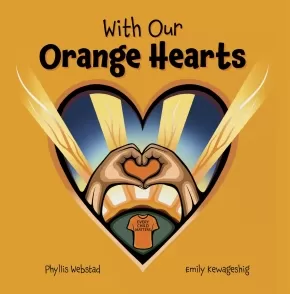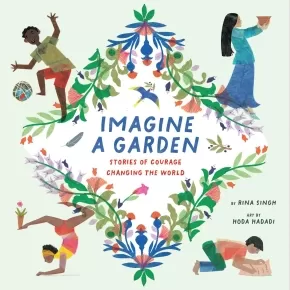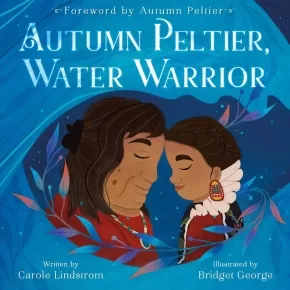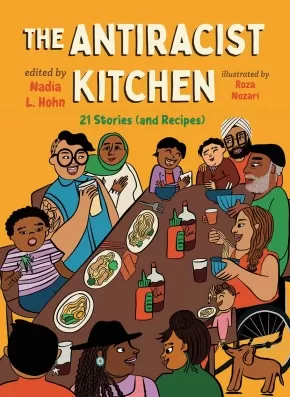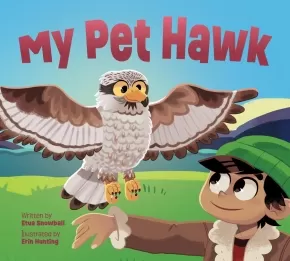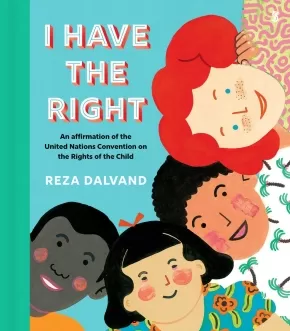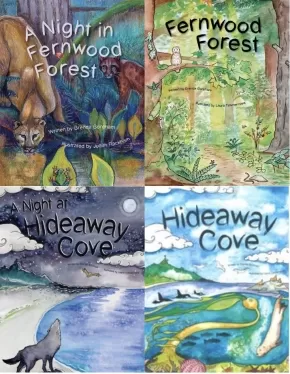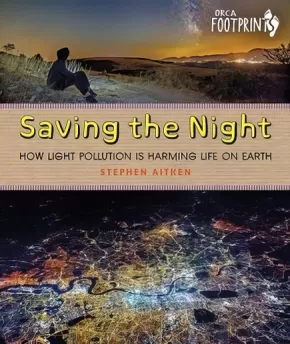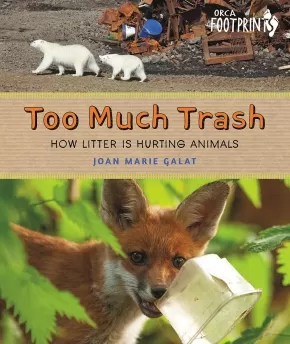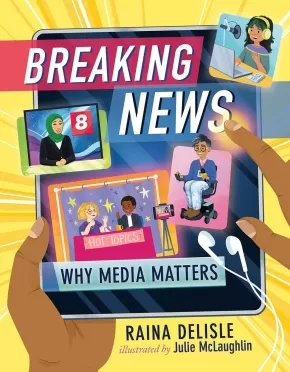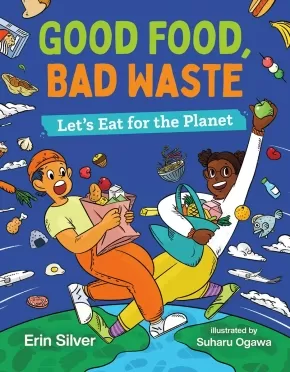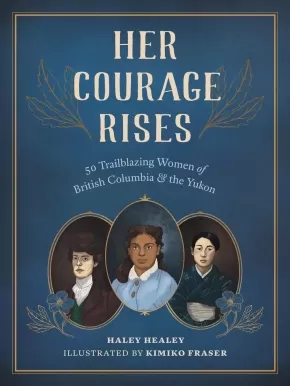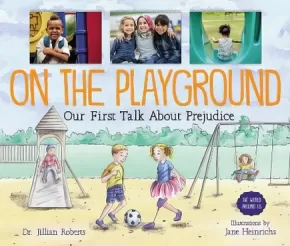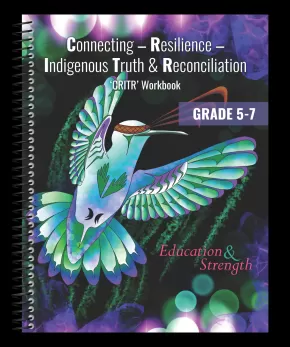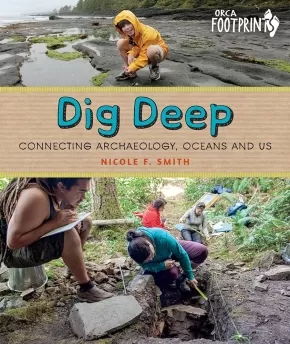
Social Responsibility
1
-
15
of
132 Results;
Sort By
Go To
of 9
Walking Together / Menaqaj Pemwije’tulti’k
$24.99
Format:
Hardcover
Text Content Territories:
Indigenous Canadian; First Nations; Mi'kmaq (Mi'gmaq);
ISBN / Barcode: 9781834020174
Synopsis:
Synopsis:
This bestselling and award-winning introduction to Etuaptmumk—the gift of multiple perspectives also known as Two-Eyed Seeing—is now available in a bilingual edition that celebrates the Mi’kmaw language and our connections to nature.
Elder Albert D. Marshall is a leading environmental voice who has brought forward the concept of Etuaptmumk, honoring and braiding both Indigenous and non-Indigenous knowledges and ways of knowing for the benefit of all. Walking Together is grounded in this, as well as in the concept of Netukulimk, meaning to protect Mother Earth for the ancestors and for present and future generations. The journey in Walking Together nurtures respectful, reciprocal, responsible relationships with the Land and Water, with plant life and animals, and with other-than-human beings.
Translated by Barbara Sylliboy and Arlene Stevens, Eskasoni First Nation, Unama’ki (Cape Breton), Nova Scotia, the dual-language text in Mi’kmaw and English furthers Elder Marshall’s lifelong work preserving cultural beliefs and creating a strong vision for his people and for the future. Elder Marshall and Louise Zimanyi are working together to promote Land-based learning through storytelling, an approach that has global relevance for protecting biodiversity, climate action, and resilience. Emily Kewageshig’s evocative artwork illustrates the beauty of connecting with nature and encourages readers to strengthen their relationships to the world around them.
Educator Information
Recommended for ages 4 to 7.
Introduces the concept of Two-Eyed Seeing (the gift of multiple perspectives) to young readers.
Bilingual Edition: Mi’kmaw and English.
This book is available in English: Walking Together
Additional Information
40 pages | 9.00" x 9.00" | Hardcover
The Sacred Stone Camp
$24.99
Artists:
Format:
Hardcover
Text Content Territories:
Indigenous American; Native American; Sioux; Dakota; Lakota;
ISBN / Barcode: 9780593696637
Synopsis:
Synopsis:
A stunning account of the Sacred Stone Camp's first day, where Indigenous activist LaDonna BraveBull Allard gathered water protectors to protest the Dakota Access Pipeline
The land is sacred to the people. The people are sacred to the land.
As Water Protectors gather to defend the water and protect the land against a black snake that threatens the rivers that millions of people depend on, a young girl looks to her Unci LaDonna and Lala Miles who are leading the way to the camp.
Although she’s nervous about what might happen next, she finds strength from her family and the strangers all coming together to stand up for what’s right.
Written with love by Rae Rose, who shares many memories with LaDonna, this is a deeply moving tribute to LaDonna’s work and impact with stunning watercolor illustrations by Aly McKnight.
Educator Information
Recommended for ages 5 to 9.
Additional Information
40 pages | 11.00" x 8.50" | Hardcover
Mary Simon
$14.95
Format:
Paperback
Text Content Territories:
Indigenous Canadian; Inuit;
ISBN / Barcode: 9781774562574
Synopsis:
Synopsis:
Discusses the life and accomplishments of Mary Simon, the first Indigenous person to hold office. She has served as the 30th governor general of Canada since July 26, 2021.
Educator Information
Juvenile Nonfiction.
Indigenous consultant: Dennis McPherson
Additional Information
24 Pages
A Kids Book About Racism
$26.99
Format:
Hardcover
ISBN / Barcode: 9780744085679
Synopsis:
Synopsis:
A clear explanation of what racism is and how to recognize it when you see it.
As tough as it is to imagine, this book really does explore racism. But it does so in a way that’s accessible to kids. Inside, you’ll find a clear description of what racism is, how it makes people feel when they experience it, and how to spot it when it happens.
Covering themes of racism, sadness, bravery, and hate. This book is designed to help get the conversation going. Racism is one conversation that’s never too early to start, and this book was written to be an introduction on the topic for kids aged 5-9.
A Kids Book About Racism features:
- A friendly, approachable, and kid-appropriate tone throughout.
- Expressive font design; allowing kids to have the space to reflect and the freedom to imagine themselves in the words on the pages.
- An author who has lived experience on the topic of racism.
Tackling important discourse together!
Educator Information
Recommended for ages 5 to 9.
Additional Information
64 pages | 8.00" x 10.38" | Hardcover
Who Was Wilma Mankiller?
$9.50
Format:
Paperback
Text Content Territories:
Indigenous American; Native American; Cherokee; Cherokee Nation (Cherokee Nation of Oklahoma);
ISBN / Barcode: 9780593888872
Synopsis:
Synopsis:
Learn about the life and legacy of the first woman to serve as principal chief of the Cherokee Nation! Wilma Mankiller's struggle for political change throughout her life will be sure to inspire readers in this addition to the #1 New York Times bestselling series.
Wilma Mankiller grew up immersed in the Cherokee community and culture of Oklahoma. When her family moved to San Francisco as part of the Indian Relocation Program, she had to quickly adjust to city life. Along the way, Wilma never lost her dedication to her people and their centuries-old traditions. She grew up to become a major political activist. From aiding the Occupation of Alcatraz in 1969 to making history as the first woman principal chief of the Cherokee Nation in 1985, Wilma never wavered in her support for her community. She spent her life fighting for the rights of Native Americans and inspires political activism to this day.
Educator Information
Recommended for ages 8 to 12.
Additional Information
112 pages | 5.31" x 7.62" | Paperback
Whispers of the Earth: A Journey through Indigenous Wisdom
$29.00
Artists:
Format:
Paperback
Text Content Territories:
Indigenous Canadian; First Nations; Salish; Interior Salish; St'at'imc (Lillooet, Lil'Wat);
ISBN / Barcode: 978-1-73869-534-8
Synopsis:
Synopsis:
Prepare to embark on a journey rich with the wisdom of our ancestors and the secrets shared by Mother Earth.
In this children’s book, you will follow a path once tread by those before us, where the songs of the trees, the dance of the rivers, and our stories are carried by the wind. These teachings are invaluable treasures passed down through generations.
You’ll discover the language of animals, the lessons of plants, and the wisdom of the land. If you listen closely, you will hear the “Whispers of the Earth,” guiding you on this incredible adventure.
Educator Information
Recommended for kindergarten to grade 7.
Carl Sam advised on the language, and is “Ha7li” of the Bear Clan from Skookumchuck, part of St’at’icmulh Nation, sometimes referred to as the Interior Salish. Through this book, he shares elements of the Ucwalmícwts language.
Includes some words in Ucwalmícwts.
Additional Information
60 pages | 20 × 20 × 1 cm | Paperback | Printed locally on 100% post-consumer recycled paper.
Bison: Community Builders and Grassland Caretakers
$24.95
Format:
Hardcover
Text Content Territories:
Indigenous American; Indigenous Canadian; First Nations; Assiniboine (Nakoda Oyadebi); Carry The Kettle Nakoda First Nation; Métis;
ISBN / Barcode: 9781459839236
Synopsis:
Synopsis:
Bison are North America’s largest land animals.
Some 170,000 wood bison once roamed northern regions, while at least 30 million plains bison trekked across the rest of the continent. Almost driven to extinction in the 1800s by decades of slaughter and hunting, this ecological and cultural keystone species supports biodiversity and strengthens the ecosystems around it. Bison: Community Builders and Grassland Caretakers celebrates the traditions and teachings of Indigenous Peoples and looks at how bison lovers of all backgrounds came together to save these iconic animals. Learn about the places where bison are regaining a hoof-hold and meet some of the young people who are welcoming bison back home.
Educator & Series Information
Recommended for ages 9 to 12.
This book is part of the Orca Wild series that examines the intricacies of animals, ecosystems, humans and our relationships to each other.
This STEAM title examines the biology and habitat of bison, their role as a keystone species, their importance to Indigenous cultures, conservation efforts, and how kids can take action to protect bison in the future.
Reading Levels:
Fountas & Pinnell Text Level Gradient: W
Lexile measure: 1020L
Guided Reading Level: W
Contains some Indigenous content, such as a contribution from Kaleya Blackbird Runns from the Carry the Kettle Nakoda Nation in Saskatchewan, as well as information on the bison's importance to many Indigenous cultures in North America.
Additional Information
96 pages | 7.50" x 9.00" | 96 colour photographs, 2 maps, 1 index, 1 bibliography | Hardcover
Wildlife Crossing: Giving Animals the Right-of-Way
$21.95
Format:
Hardcover
ISBN / Barcode: 9781459833463
Synopsis:
Synopsis:
What happens when the needs of people and nature collide?
More than 13 million miles of roads crisscross landscapes in 222 countries. Roads offer many human benefits, but they also create problems for nature. Their construction leads to a loss of biodiversity through habitat loss, fragmentation and degradation. Roads isolate wildlife populations, impede migration and allow invasive plant and animal species to spread, while giving rise to pollution from garbage, light, noise and airborne contaminants. With innovative tools, like wildlife overpasses to reconnect landscapes, smart roads and vehicles to maximize safety, and a little hands on help, we can create environmental harmony. And sitting in the passenger seat, young people can play a part in helping highways and habitats coexist.
Reviews
“Well organized and includes clearly explained examples from many locations…This volume offers considerably more information for students researching the topic. An intriguing subject and a good resource for middle-grade reports.”— Booklist
“Gorgeous, crisp photographs complement the well-written text…A first purchase for libraries that need more books on the topic of conservation and the impact of development on wildlife.” — School Library Journal (SLJ)
“A fascinating, invaluable and enlightening tool for libraries, schools and homes alike. Wildlife Crossing will empower all readers to do their part when it comes to road ecology and will undoubtedly spark meaningful conversations about what it means to coexist with nature. Very highly recommended.”— Canadian Children's Book Centre (CCBC) Canadian Children’s Book News
“Wildlife Crossing gives an intriguing overview of the topic in just 48 pages, but it is a good addition to science collections with a focus on the environment. Highly Recommended.”— CM: Canadian Review of Materials
Educator & Series Information
Recommended for ages 9 to 12.
This book is part of the Orca Footprint series.
Reading Levels:
Fountas & Pinnell Text Level Gradient: X
Lexile measure: 1130L
Guided Reading Level: X
Additional Information
48 pages | 8.00" x 9.50" | Includes 74 colour photographs, 1 index, 1 bibliography | Hardcover
Our Plastic Problem: A Call for Global Solutions
$21.95
Format:
Hardcover
ISBN / Barcode: 9781459836709
Synopsis:
Synopsis:
We have a serious plastic problem.
What was supposed to be a miracle material when it was first invented is now one of the biggest sources of pollution on our planet. But where does plastic come from? Why do we use so much of it? How does it hurt the environment and the animals who live there? Our Plastic Problem looks at plastic's history, uses, and how it affects land, water, air and human health. It also explores innovations in bioplastic and recycling, and practical ways to reduce and replace the plastic in our lives. Working together, we can solve our plastic problem.
Reviews
“Like other books in the Orca Footprints series, this volume is accessible, broadly informative, and illustrated with many pertinent color photos. A timely introduction to a serious environmental issue.” — Booklist
“Durnford effectively communicates a sense of urgency. Young eco-activists will also find general guidelines for localized projects, as well as specific instructions for laundering clothing to reduce microfibre shedding, among other immediately applicable advice. Accentuates the positive without minimizing the issue’s scope.” — Kirkus Reviews
“This is a great introduction to the history of plastics. Very informative and written at a level that is digestible for young readers. Would work well with a study unit. Hand this book to budding environmentalists or anyone interested in learning more about the plastic problem. A recommended purchase for updating nonfiction collections.” — School Library Journal (SLJ)
Educator & Series Information
Recommended for ages 9 to 12.
This book is part of the Orca Footprint series.
Reading Levels:
Fountas & Pinnell Text Level Gradient: X
Lexile measure: 1070L
Guided Reading Level: X
Additional Information
48 pages | 8.00" x 9.50" | Includes 78 colour photographs, 1 index, 1 bibliography | Hardcover
Microbes to the Rescue: Using Bacteria, Algae and Fungi to Clean Up the Planet
$21.95
Format:
Hardcover
ISBN / Barcode: 9781459839137
Synopsis:
Synopsis:
Microbes are tiny but mighty, and they're everywhere!
When left alone, microbes such as bacteria, fungi and algae are experts at adapting, surviving and thriving under extreme and constantly changing conditions. These natural problem solvers can help fight the climate crisis by gobbling up pollutants, breaking down plastic, generating clean energy and capturing carbon. By harnessing the power of microbes, we can create eco-friendly packaging, farm-free food, and even make it easier to live in space! Microbes to the Rescue will introduce young readers to life on a microscopic level and explore how bacteria, fungi and algae play a key role in the connection between all life on Earth. Let’s get microscopic and learn about how microbes can create a cleaner and more sustainable future.
Educator & Series Information
Recommended for ages 9 to 12.
This book is part of the Orca Footprint series.
Reading Levels:
Fountas & Pinnell Text Level Gradient: X
Lexile measure: 1110L
Guided Reading Level: X
Additional Information
56 pages | 8.00" x 9.50"| Includes 63 colour photographs, 1 index, 1 bibliography | Hardcover
I Love Salmon and Lampreys: A Native Story of Resilience
$30.95
Artists:
Format:
Hardcover
Text Content Territories:
Indigenous American; Native American; Karuk; Yurok;
ISBN / Barcode: 9781597146685
Synopsis:
Synopsis:
For young readers, an inspiring story about a river, a successful Native-led movement for environmental justice, and the making of a scientist.
Growing up in the Yurok and Karuk Tribes, Brook Thompson learned to care for the fish that nurtured her and her family. She knew that along the Klamath River in Northern California, salmon and lampreys are a needed part of life. But she also saw how these fish were in danger. People had built dams along the Klamath River, making it very hard for salmon and lampreys to live. Tribal people and their friends organized to have four of the dams removed, and they won. In I Love Salmon and Lampreys, Thompson tells this inspiring tale, and she shares how it motivated her to become a scientist. Featuring adorable illustrations by Anastasia Khmelevska, as well as fun facts about salmon and lampreys, this is a stirring story about stewarding nature for the generations to come.
Reviews
"[Brook Thompson] compares these salmon transitions to her own life, sharing how she left her family to go out to university to learn how to protect salmon and lampreys and then came home to fight for conservation rights as an engineer and scientist. Maps, back matter, and fun facts enhance this satisfying, engaging story." —Booklist
"A powerful story about protesting for positive changes that protect the environment." —Kids Bookshelf
"The book not only celebrates the resilience of the Klamath River and its inhabitants but also highlights the profound impact of environmental justice on the lives of individuals and communities. It is a powerful reminder that we all have a role to play in protecting our planet and ensuring a healthy future for generations to come." —Mama Likes This
Educator Information
Recommended for ages 4 to 8.
Additional Information
32 pages | 9.00" x 9.00" | Hardcover
Ramadan: The Holy Month of Fasting (PB)
$18.95
Format:
Paperback
ISBN / Barcode: 9781459841888
Synopsis:
Synopsis:
The month of Ramadan offers the opportunity to improve one's personal and spiritual behavior.
By focusing on positive thoughts and actions, Muslims build a closer connection with God and come away from the month feeling spiritually renewed. Ramadan: The Holy Month of Fasting explores the richness and diversity of the Islamic tradition by focusing on an event of great spiritual significance and beauty in the lives of Muslims. Rich with personal stories and stunning photographs, Ramadan demystifies the traditions and emphasizes the importance of diversity in a world where Islamophobia is on the rise.
Reviews
"The personal perspectives elevate this volume above an average informational book; readers, both non-Muslims and Muslims, can step into the shoes of someone from another background. Wide in scope and personal in presentation, this book is a good choice for learning about Muslims' traditions as expressed in various cultures."— Kirkus Reviews
"The book is sprinkled with many colourful photos of people praying and celebrating around the world, mosques, food and more which illustrate the joy that this holiday brings to Muslims…I would recommend Ramadan: The Holy Month of Fasting to children learning about Ramadan and the Muslim faith as well as to children who do celebrate this holiday as they will see a reflection of their lives in its pages. Recommended."— CM Magazine
"This is a comprehensive book of facts and experiences for any child who is learning about what it means to follow Islam. A solid choice for children seeking to learn more about the faith for assignments or to satisfy their own intellectual curiosity."— School Library Journal
"Ramadan provides a clear, accessible introduction to Ramadan and Islamic beliefs generally…This series has been insightfully planned and carried out: books like Khan's Ramadan make intercultural discovery and understanding fascinating and fun. I particularly like how prominent girls and women are in this text. And while the book is intended for kids, there are many adults who would benefit from reading it to dispel their misunderstandings. I emphatically recommend Ramadan: The Holy Month of Fasting to any class or community interested in reading for multicultural understanding."— Resource Links
Educator & Series Information
This book is part of the Orca Origins series that explores cultural celebrations throughout the world.
Recommended for ages 9 to 12.
Additional Information
88 pages | 7.50" x 9.00" | Paperback
Autumn Peltier
$14.95
Format:
Paperback
Text Content Territories:
Indigenous Canadian; First Nations; Anishinaabeg; Wiikwemkoong Unceded Territory;
ISBN / Barcode: 9781774566718
Synopsis:
Synopsis:
Only 19 years old, Autumn Peltier has achieved so much by advocating for her community. Discover more about her advocacy for Indigenous peoples and clean water.
Educator Information
Juvenile Nonfiction.
Additional Information
24 Pages
The Heartbeat Drum: The Story of Carol Powder, Cree Drummer and Activist
$24.99
Format:
Hardcover
Text Content Territories:
Indigenous Canadian; First Nations; Cree (Nehiyawak); Woodland Cree; Woods Cree; Bigstone Cree Nation;
ISBN / Barcode: 9781419756689
Synopsis:
Synopsis:
Author Deidre Havrelock’s and illustrator Aphelandra’s The Heartbeat Drum is an uplifting picture book biography of a Cree activist and musician who founded an Indigenous hand drumming group, led by women and children, that spreads joy, healing, and unity
nisôhkisinân (We are strong) . . .
ninikamonân (We are singing) . . .
mîna nika-âhkamêyimonân (And we will continue) . . .
Whenever young Carol Powder sang along to her family’s music, her heart felt light and full of joy. Learning from her grandfather, Moshum, Carol listened closely to the drums’ heartbeat until one day Moshum made her a drum of her very own. As Carol grew up, she passed down her songs to her children, grandchildren, and many women in her community, just as Moshum taught her—even as women and children became increasingly excluded from sitting at the drum. Despite those who disapproved, she formed her own drumming group called Chubby Cree.
Today, Carol and her group share their music to advocate at climate events, to honor residential school survivors at special ceremonies, and to spread healing for anyone who needs it. Empowering and joyfully illustrated, The Heartbeat Drum is a radiant celebration of preserving Indigenous traditions, finding your voice, and speaking out.
Includes both an author’s note and illustrator’s note, as well as a personal note from Carol Powder herself.
Educator Information
Recommended for ages 4 to 8.
Additional Information
40 Pages | 9" x 11" | Hardcover
Walking Together (PB)
$12.99
Format:
Paperback
Text Content Territories:
Indigenous Canadian; First Nations; Mi'kmaq;
ISBN / Barcode: 9781773217772
Synopsis:
Synopsis:
This bestselling, innovative picture book introduces readers to the concept of Etuaptmumk—or Two-Eyed Seeing, the gift of multiple perspectives in the Mi’kmaw language—as we follow a group of young children connecting to nature as their teacher.
A poetic, joyful celebration of the Lands and Waters as spring unfolds: we watch for Robin's return, listen for Frog's croaking, and wonder at maple tree's gift of sap. Grounded in Etuaptmumk, also known as Two-Eyed Seeing—which braids together the strengths of Indigenous and non-Indigenous ways of knowing—and the Mi’kmaq concept of Netukulimk—meaning to protect Mother Earth for the ancestors, present, and future generations—Walking Together nurtures respectful, reciprocal, responsible relationships with the Land and Water, plant-life, animals and other-than-human beings for the benefit of all.
Reviews
"Walking Together is a poetic celebration grounded in Etuaptmumk (Two-Eyed Seeing) that weaves together the strengths of Indigenous and non-Indigenous ways of knowing. The story explores respectful, reciprocal, responsible relationships between the land, water, plants, animals, and humans." - The Dalai Lama Center
Educator Information
Recommended for ages 4 to 7.
Introduces the concept of Two-Eyed Seeing (the gift of multiple perspectives) to young readers.
This book is available in a bilingual format: Walking Together / Menaqaj Pemwije’tulti’k
Additional Information
36 pages | 8.90" x 8.90" | Paperback
Save Our Seeds: Protecting Plants for the Future
$21.95
Format:
Hardcover
ISBN / Barcode: 9781459836976
Synopsis:
Synopsis:
Small but mighty. Learn about the importance of seeds and how saving and conserving them for the future is key to sustaining healthy life on the planet.
Seeds are essential to all life on the planet. They provide us with food, clothing and other materials we need and use every day. Without seeds, the planet wouldn't have as many species of plants as we do now. Without plants, there wouldn't be oxygen to breathe and there would be less food for all life on Earth. But today seeds are under threat, mostly from human activity. The climate crisis and food insecurity mean protecting our seeds is more important than ever. In Save Our Seeds, young readers will hear from experts in the field and learn how to take action to preserve seeds for the future.
Reviews
“The latest volume in the well-regarded Orca Footprints series presents a broad array of information about seeds…Exploring seeds more broadly than most children’s books on the topic, this volume encourages readers to collect, plant, and share seeds—a small, yet powerful resource.”- Booklist
“Author and master gardener Sheryl Normandeau… emphasizes the importance of saving and conserving seeds for the future in order to sustain healthy life on Earth. Highly Recommended.”- CM: Canadian Review of Materials
Educator & Series Information
Recommended for ages 9 to 12.
This book is part of the Orca Footprint series.
Reading Levels:
Fountas & Pinnell Text Level Gradient: X
Lexile measure: 1040L
Guided Reading Level: X
Additional Information
48 pages | 8.00" x 9.50" | Includes 60 colour photographs, 1 index, 1 bibliography | Hardcover
Animal Minds: What Are They Thinking?
$24.95
Format:
Hardcover
ISBN / Barcode: 9781459834156
Synopsis:
Synopsis:
A deep dive into the minds of animals and how they think.
Wouldn't it be amazing to see inside the mind of a lion, a gorilla, an octopus or even a bee? In Animal Minds: What Are They Thinking?, author Dana L. Church looks at how scientists are doing just that. Their research shows that a wide variety of species have unique personalities, impressive memories, counting abilities, and incredible problem-solving skills.
Meet the scientists who study the minds of animals, discover the similarities and differences between the minds of different species and learn how they compare to our own. From dolphins to dung beetles, tigers to turkey vultures, Animal Minds shows that we are only beginning to scratch the surface when it comes to revealing the amazing inner worlds of the thousands of different creatures with whom we share this planet.
Reviews
“The book includes questions and answers with women scientists in the field, sidebars, and eye-catching full-page color photos. A good starting book on animal cognition for any young animal lover who has wondered if animals are more like humans than we think.”— Booklist
“Full-colour photos and illustrations are well-chosen and positioned to enhance understanding…Young readers…will find Animal Minds: What Are They Thinking? intriguing. It might help fill [a] knowledge gap and offer inspiration for further investigation. Highly recommended.”— CM: Canadian Review of Materials
Educator & Series Information
Recommended for ages 9 to 12.
This book is part of the Orca Wild series that examines the intricacies of animals, ecosystems, humans and our relationships to each other.
Additional Information
96 pages | 7.50" x 9.00" | Hardcover
Get Outside!: How Humans Connect with Nature
$21.95
Format:
Hardcover
ISBN / Barcode: 9781459836877
Synopsis:
Synopsis:
We know spending time in nature is good for us, but why? And how did people become so disconnected from the natural world, anyway?
Get Outside! How Humans Connect with Nature explores the important relationship between people and nature. It asks big questions, like Are humans part of nature or separate from it? and Do all people have equal access to nature? By discussing global issues such as the climate crisis and environmental racism, the book shows us that, by strengthening our relationship with the natural world, we can learn how to take care of the environment and to let the environment take care of us too.
Reviews
“Payne argues that humans are part of nature and should be engaging with the natural world more often and more effectively…Informative and likely to spur readers to forge a stronger bond with the natural world.”— Kirkus Reviews
“The text is visually striking…This book should appeal to readers interested in or curious about the outdoors and could lead to deeper engagement or activism.”— School Library Journal (SLJ)
Educator & Series Information
Recommended for ages 9 to 12.
This book is part of the Orca Footprint series.
Reading Levels:
Fountas & Pinnell Text Level Gradient: X
Lexile measure: 1030L
Guided Reading Level: X
Additional Information
48 pages | 8.00" x 9.50" | Includes 49 colour photographs, 1 index, 1 bibliography | Hardcover
What Poo Can Do: How Animals Are Fighting the Climate Crisis
$21.95
Format:
Hardcover
ISBN / Barcode: 9781459835412
Synopsis:
Synopsis:
We all know animals are affected by the climate crisis. But did you know the climate crisis is also affected by animals?
From whales to dung beetles, What Poo Can Do explores how animals big and small are helping the planet every time they do a number two. Come on a journey to different parts of the world to see how animals are fertilizing plants, storing carbon, preventing fires, reducing methane and even creating color-coded maps—all through their feces! Readers will discover how animal defecation makes a difference when it comes to the climate crisis. It's time to embrace the power of poo!
Reviews
“Well-organized and sustains the reader’s interest…Highly recommended.”— CM: Canadian Review of Materials
“While most environmental titles for children focus on how humans can protect and care for the planet, this book focuses on animals who are already assisting the cause—with poop!”— Booklist
Educator & Series Information
Recommended for ages 9 to 12.
This book is part of the Orca Footprint series.
Reading Levels:
Fountas & Pinnell Text Level Gradient: X
Lexile measure: 1090L
Guided Reading Level: X
Big Ideas & Themes: Environmental Awareness, Climate Change, Environmental Conservation & Protection, Green Issues, Sustainability, Wildlife
Additional Information
48 pages | 8.00" x 9.50" | Includes 41 colour photographs, 1 diagram, 1 index, 1 bibliography | Hardcover
The Heart of a River
$18.00
Artists:
Format:
Paperback
Text Content Territories:
Indigenous American; Native American; Salish; Interior Salish; Sinixt; Indigenous Canadian; First Nations; Salish; Interior Salish; Sinixt;
ISBN / Barcode: 9781771607001
Synopsis:
Synopsis:
This is a book for anyone, of any age, who cares about rivers.
This story of the Columbia River is unique. Told from the river’s perspective, it is an immersive, empathetic portrait of a once-wild river and of the Sinixt, a First People who lived on the mainstem of this great western river for thousands of years and continue to do so even though Canada declared them “extinct” in 1956.
The book’s re-release comes at a critical time for natural systems and for reconciliation with Indigenous Peoples across North America. The Colville Confederated Tribes, representing over 3,000 Sinixt People, recently won a precedent-setting case in the Supreme Court of Canada affirming that Aboriginal Rights do not stop at the border. The important story of the Sinixt weaves together with the ongoing ecological impact of hydropower development on the Columbia and its tributaries.
Central to the story is the joyous spirit of salmon, once a free swimmer in the Columbia’s currents north of the border but now blocked from ancestral spawning grounds by Grand Coulee and other dams. Restoring migratory fish indigenous to the Upper Columbia will require transboundary cooperation. With Indigenous Nations on both sides of the US–Canada border now leading the way, many are hopeful that the fish will return.
Lavishly illustrated by Nelson, BC, designer Nichola Lytle, this portrait of a globally significant river will inspire anyone who reads it to care about the future of the salmon, a fish that unites all of us in its quest for freedom and possibility.
Educator Information
Recommended for ages 4 to 8.
Additional Information
96 pages | 9.50" x 8.50" | Paperback
Kindred Spirits: Shilombish Ittibachvffa
$21.99
Artists:
Format:
Hardcover
Text Content Territories:
Indigenous American; Native American; Choctaw; Hopi; Navajo (Diné);
ISBN / Barcode: 9781623543969
Synopsis:
Synopsis:
Those who feel the same are kindred spirits.
A nonfiction picture book about the inspiring true pay-it-forward story that bridges two continents, 175 years, and two events in history--connecting Ireland, Choctaw Nation, Navajo Nation, and the Hopi Tribe.
1845. The Potato Famine devastated Ireland. An ocean away, Choctaw people heard and were moved by the similarities to the injustice they had suffered on the Trail of Tears. Though they had little, they gathered money to donate.
2017. Irish people built a statue to remember their connection to the Choctaw Nation--twenty-foot high feathers in the shape of a bowl.
2020. COVID-19 disproportionately ravished the Navajo Nation and the Hopi Tribe. Irish people remembered the Choctaws' kindness and paid it forward by donating.
Empathy creates kindness that lives well beyond a single act and includes more people the bigger it grows.
Educator Information
Recommended for ages 5 to 8.
Additional Information
32 pages | 11.00" x 9.00" | Hardcover
Little By Little: You Can Change the World
$22.95
Artists:
Format:
Paperback
Text Content Territories:
Indigenous Canadian; First Nations; Cree (Nehiyawak); Swampy Cree ; Shamattawa First Nation;
ISBN / Barcode: 9781774920985
Synopsis:
Synopsis:
The inspiring true story of how Indigenous activist Michael Redhead Champagne found his voice to create change in his community.
Michael might be young, but he’s got a big heart and a strong sense of right and wrong. He knows it’s right to help people when they need it—but what can he do when so many people need help?
When Michael finds out about an upcoming youth conference, he sees his chance. But when he gets to the conference, he’s the youngest person there! And the speaker on stage is saying things about his community that aren’t true. Will Michael be brave enough to use his voice to stand up for what he knows is right?
Little By Little is a beautifully illustrated graphic novel about how one person can spark change and inspire others.
Awards
- 2025 Forest of Reading
Reviews
“A gentle, uplifting, and inspiring story about a gentle, uplifting, and inspiring person. In this little book, Michael teaches us and our future generations that anyone can be a change-maker by using their voice.” — Rosanna Deerchild, poet and CBC Radio host
"Here’s a touching story about Michael Redhead Champagne that will inspire children to help others, even in the simplest of ways." - Debra H., Elementary School Teacher, Indigenous Books for Schools
Educator Information
Recommended for ages 9 to 12.
Fountas & Pinnell T
Lexile Framework for Reading HL560L
Recommended in the Indigenous Books for Schools catalogue as being useful for grades 4 to 6 for Career Education, English Language Arts, and Social Studies.
Themes: Community, Diversity and Inclusion, Relationships, Respect, and Social Justice
Additional Information
56 pages | 6.50" x 10.00" | Paperback
I Am the Elwha (PB)
 $14.95
$14.95

Artists:
Format:
Paperback
Text Content Territories:
Indigenous American; Native American; Salish; Coast Salish; Klallam (Clallam); Lower Elwha Klallam Tribe;
ISBN / Barcode: 9781771746311
Synopsis:
Synopsis:
"I am the Elwha, rushing down to the sea. I am the Elwha, wild and free."
The Elwha River flows 72km (45 miles) from its source in the Olympic Mountains to the Strait of Juan de Fuca in the Pacific Northwest. Uniquely, it hosts all six salmon species (Pink, Chinook, Coho, Sockeye, Steelhead, and Chum) as well as several species of trout.
In 1911, two dams were built on the river. The dams blocked the migration routes of the salmon and dramatically altered the entire river ecosystem for 100 years. In 2012, the dams were decommissioned and the world's largest dam removal and habitat restoration project began. In this lyrical and beautifully illustrated book, the author chronicles the history of the Elwha.
Narrated by the powerful voices of plants and animals that inhabit the river ecosystem, the dam builder, a worker, members of the Klallam Tribe, and the river itself, this story celebrates the ongoing rewilding of this special environment and offers a welcome to all the creatures who are coming home.
To learn more visit: www.elwha.org
Awards
- 2021 Riverby Award for Young Readers
Reviews
“I Am the Elwha is a powerful read about a powerful river and those who value and protect it." – Raina Delisle, Hakai Magazine
Educator Information
Recommended for grades 3 to 7.
At the back of the book are three pages of cultural, scientific, and historical information that discuss the following:
- the importance and symbolism of salmon to the Lower Elwha Klallam Tribe and other Coastal Salish Tribes
- facts about the six species of salmon found in the Elwha River (Chinook, Pink, Chum, Sockeye, Coho, and Steelhead)
- the history of the Elwha River and its status today
Keywords / Subjects: The Elwha River, Rivers, Dams, History, Environmental Awareness, Lower Elwha Klallam Tribe, Coast Salish, Native American, Culture, Washington, Animals, Salmon, First Salmon Ceremony, Plants, Nature, Settlers, Social Responsibility, Environmental Activism, Poetry.
Additional Information
32 Pages | 8.5" x 11" | ISBN: 9781771746311 | Second Edition | Paperback
Authenticity Note: This lyrical story, which chronicles the history of the Elwha River, is written by Lori Peelen. Robert Elofson, Tribal Elder and Harvest Manager in the Natural Resources Department for the Lower Elwha Klallam Tribes, approved Lori's work and contributed pages of back matter at the end of the work. Lori's story was further approved by Frances Charles, the Tribal Councilwoman for the Lower Elwha Klallam Tribe, after the entire council read and approved it.
The Canadian Content label has been applied because the illustrator of this work is Canadian.
Less Is More: Join the Low-Waste Movement
$21.95
Format:
Hardcover
ISBN / Barcode: 9781459835443
Synopsis:
Synopsis:
All over the world, people are joining the low-waste movement and getting tough on their trash.
Maybe you’ve heard the reports of the Great Pacific Garbage Patch swirling in the ocean. Maybe you’ve seen the photos of whales and sea birds with trash in their bellies. Or maybe you’ve heard that only 9 percent of our plastic waste actually gets recycled.
We can all do our part for the planet by creating less garbage. In Less Is More young readers will discover how to avoid waste in the first place, reduce how much they use and reuse what they can, before they recycle and rot (compost) the rest. With small, simple actions we can become part of the circular economy. Find out how you can join the low-waste movement—and get your friends and family on board too!
Educator & Series Information
Recommended for ages 9 to 12.
This book is part of the Orca Footprint series.
Additional Information
48 pages | 8.00" x 9.50" | 51 Colour Photos, 3 Colour Tables, 2 Diagrams, 1 Index, 1 Bibliography | Hardcover
Open Science: Knowledge for Everyone
$26.95
Artists:
Format:
Hardcover
ISBN / Barcode: 9781459833586
Synopsis:
Synopsis:
Science is for everyone, right?
Unfortunately, that's not always true. Discovery, research and innovation are often top secret, and big businesses charge high prices for that information. The field of open science is trying to change that. It's all about sharing knowledge. Teams of scientists around the world are working together to improve and speed up scientific research and share their results so that everyone benefits.
Open Science: Knowledge for Everyone examines the history of scientific research and how ideas and information are shared and why. It also looks at innovations made using open science, such as treatments for diseases and vaccines to protect against viruses like COVID-19, discoveries that were only possible thanks to the sharing of information. Discover how regular people, including kids, can be citizen scientists and what we all can do to share science and make the world a better place.
Reviews
“Highlights the benefits of researchers working together to find solutions and sharing them in a variety of contexts…Colourful illustrations throughout are particularly effective in underscoring the importance of emphasizing equity, diversity, and inclusivity in science. Inspiring and informative for readers interested in ensuring that scientific research is more accessible to everyone.” — Booklist
Educator & Series Information
Recommended for ages 9 to 12.
This book is part of the Orca Think series.
Additional Information
96 pages | 7.00" x 9.00" | 30 Colour Illustrations, 8 b&w Photos, 69 Colour Photos, 1 Index, 1 Bibliography | Hardcover
Wild Horses: Running Free
$24.95
Format:
Hardcover
Text Content Territories:
Indigenous;
ISBN / Barcode: 9781459825598
Synopsis:
Synopsis:
Wild horses are legendary, but today their very existence is under threat from a changing environment, politics and less protected spaces to roam free.
These animals live all over the world, including the iconic mustangs in North America—a symbol of freedom and the American West. Today what we thought we knew about the history of wild horses and where they came from is changing. What makes a horse wild? Where do they live and how did they end up there? What is the relationship between wild horses and Indigenous Peoples? How are governments and citizens working for or against them?
In this book, readers discover the history, biology and ecology of wild horses and the key role young people are playing in protecting wild horse populations to keep them running free for generations to come.
Educator & Series Information
Recommended for ages 9 to 12.
This book is part of the Orca Wild series that examines the intricacies of animals, ecosystems, humans and our relationships to each other.
Includes some Indigenous content.
Additional Information
96 pages | 7.50" x 9.00" | 50 Colour Photographs, 1 Index | Hardcover
With Our Orange Hearts (HC)
$16.99
Format:
Hardcover
Text Content Territories:
Indigenous Canadian; First Nations; Salish; Interior Salish; Secwepemc (Shuswap); Stswecem'c Xgat'tem; Inuit; Métis;
ISBN / Barcode: 9781778540257
Synopsis:
Synopsis:
Listening is a first step towards reconciliation. It's never too early to start. "Every child matters, including you and me. With our orange hearts, we walk in harmony." As a young child, your little world can be full of big feelings. In this book, I, Phyllis Webstad, founder of Orange Shirt Day, show how sharing my story with the world helped me to process my feelings. My true story encourages young children to open their hearts when others share their feelings and be more comfortable sharing their own feelings, too.
Educator Information
Recommended for ages 2 to 6.
This book is available in French in paperback: Avec nos coeurs oranges
This book is available in English in paperback: With Our Orange Hearts (PB)
Additional Information
24 pages | 8.15" x 8.25" | Hardcover
Imagine a Garden: Stories of Courage Changing the World
$23.95
Artists:
Format:
Hardcover
ISBN / Barcode: 9781771647137
Synopsis:
Synopsis:
Illustrated with stunning cut paper art, these seven poetic vignettes capture true stories of courage, hope, and resilience from around the world.
In Imagine A Garden, award-winning children's author Rina Singh shares seven real-life stories of ordinary people doing extraordinary things for their communities amidst war, poverty, and violence.
With vivid, textured images from celebrated Iranian illustrator Hoda Hadadi, this powerful picture book is:
- A celebration of everyday heroes and how they make their communities a better place.
- A teaching tool for facilitating difficult but hopeful conversations about conflict in our world, and the people who are making a difference in their own way
For kids ages 6 to 10, Imagine A Garden reimagines our complex world through the lens of love and compassion.
Educator Information
Recommended for ages 6 to 10.
Additional Information
44 pages | 9.00" x 9.00"
Autumn Peltier, Water Warrior
$24.99
Format:
Hardcover
Text Content Territories:
Indigenous Canadian; First Nations; Anishinaabeg; Wiikwemkoong Unceded Territory;
ISBN / Barcode: 9781250795274
Synopsis:
Synopsis:
From New York Times bestselling picture book author Carole Lindstrom and illustrator Bridget George comes Autumn Peltier, Water Warrior, an inspiring picture book biography about two Indigenous Rights Activists, Josephine Mandamin and Autumn Peltier.
The seventh generation is creating
A sea of change.
It was a soft voice, at first.
Like a ripple.
But with practice it grew louder.
Indigenous women have always worked tirelessly to protect our water—keeping it pure and clean for the generations to come. Yet there was a time when their voices and teachings were nearly drowned out, leaving entire communities and environments in danger and without clean water.
But then came Grandma Josephine and her great-niece, Autumn Peltier.
Featuring a foreword from water advocate and Indigenous Rights Activist Autumn Peltier herself, this stunning picture book from New York Times-bestselling author Carole Lindstrom and illustrator Bridget George gives voice to the water and asks young readers to join the tidal wave of change.
Educator Information
Recommended for ages 4 to 8.
Additional Information
40 pages | 10.45" x 10.30" | Hardcover
Rise Up and Sing!: Power, Protest, and Activism in Music
$26.95
Artists:
Format:
Hardcover
Text Content Territories:
Indigenous Canadian; Indigenous;
ISBN / Barcode: 9781771648981
Synopsis:
Synopsis:
This inspiring introduction to activism and social justice for young teens shows the important role music plays in changing the world, featuring:
- Musicians young teens will know and love: Beyoncé, Billie Eilish, Lizzo, Lady Gaga, Lil Nas X, and more!
- Iconic artists from past generations: readers will learn about the extraordinary impact of artists such as Nina Simone, Buffy Sainte-Marie, Neil Young, John Lennon, Bob Dylan, Tracy Chapman, and more.
- Playlists for each social justice issue: Each chapter includes a playlist with recommended songs about an area of activism, from classic tracks to contemporary hits.
In Rise Up and Sing!, Andrea Warner explores how music has contributed to the fight for social justice. Across eight areas of activism—the climate emergency, Indigenous rights, civil rights, disability rights, 2SLGBTQIA+ rights, gender equality, the peace/anti-war movement, and human rights—Warner introduces some of the artists, past and present, who have made a difference both on stage and off.
Through ground-breaking artists and iconic moments, Rise Up and Sing! shows us that a song is never just a song, and that music really does have the power to change the world.
Educator Information
Recommended for ages 12 to 17.
Includes some Indigenous content.
Curriculum Connections: Activism, Social Justice, Music
Additional Information
200 pages | 7.00" x 9.00" | Hardcover
The Antiracist Kitchen: 21 Stories (and Recipes)
$29.95
Artists:
Editors:
Format:
Hardcover
Text Content Territories:
Indigenous Canadian;
ISBN / Barcode: 9781459833432
Synopsis:
Educator Information
Recommended for ages 9 to 12.
Synopsis:
An anthology featuring stories and recipes from racialized authors about food, culture and resistance
What if talking about racism was as easy as baking a cake, frying plantains or cooking rice? The Antiracist Kitchen: 21 Stories (and Recipes) is a celebration of food, family, activism and resistance in the face of racism. In this anthology featuring stories and recipes from 21 diverse and award-winning North American children's authors, the authors share the role of food in their lives and how it has helped fight discrimination, reclaim culture and celebrate people with different backgrounds. They bring personal and sometimes difficult experiences growing up as racialized people. Chopped, seared, marinated and stewed, The Antiracist Kitchen highlights the power of sitting down to share a meal and how that simple act can help bring us all together.
Featuring recipes and stories from S.K. Ali, Bryan Patrick Avery, Ruth Behar, Marty Chan, Ann Yu-Kyung Choi, Hasani Claxton, Natasha Deen, Reyna Grande, Deidre Havrelock, Jennifer de Leon, Andrea J. Loney, Janice Lynn Mather, Linda Sue Park, Danny Ramadan, Sarah Raughley, Waubgeshig Rice, Rahma Rodaah, Andrea Rogers, Simran Jeet Singh, Ayelet Tsabari and Susan Yoon.
Reviews
“Nadia Hohn has done something incredible: she has taken our collective love of food and transformed it into a cultural and educational experience in anti-racism. What’s beautiful about this book are the stories and the simplicity. It’s not about elegant ingredients or elaborate menus. The Antiracist Kitchen teaches deeply profound lessons on self-love, discrimination and social struggles through a series of personal, intimate stories. Sometimes food is the lesson, other times food is the messenger. What you get out of this anthology, however, is a clear picture of what it means to belong and how not belonging can severely impact our lives.” — Kern Carter, author of Boys and Girls Screaming
“I give The Antiracist Kitchen five foodie stars for providing nutritional healing through inherited recipes that will satisfy more than physical hunger. This unique cookbook should be in every library and pantry!”
— Crystal Allen, award-winning author of the The Magnificent Maya Tibbs series
“This beautiful collection of stories and recipes will warm both hearts and bellies for generations to come.” — Monique Gray Smith, award-winning author of My Heart Fills With Happiness
“Some of these stories will make you laugh, and some will make you cry. But all of them will bring you together in the kitchen.” — Sadé Smith, author of Granny's Kitchen
“A delicious read, chock-full of love, pride, and a whole lotta spice!” — Tami Charles, New York Times Bestselling Author of All Because You Matter
“An outstanding anthology that shows us the power of community and our interconnectedness! Through the amazing recipes and stories shared, readers will learn that celebrating, listening and learning from each other is an intentional way to fight against racism. This anthology is a work of love and it feels like a warm hug.” — Rabia Khokhar (B.A., B.Ed., M.Ed.)
Educator Information
Recommended for ages 9 to 12.
A chapter sampler is available to download: Chapter Sampler - The Antiracist Kitchen: 21 Stories (and Recipes)
Additional Information
160 pages | 7.00" x 9.50" | colour illustrations and photographs | index
My Pet Hawk - Nunavummi Reading Series
$22.95
Format:
Hardcover
Text Content Territories:
Indigenous Canadian; Inuit;
ISBN / Barcode: 9781774506066
Synopsis:
Synopsis:
"I had always wanted a pet that flew...”
A boy is amazed when he sees a hawk swoop down and catch a lemming. From that moment on, he can't stop thinking about it. One day, the boy goes on an adventure and finds his very own baby hawk to keep as a pet. But he doesn’t know what hawk chicks eat or why his new pet won’t stop biting him. Can the boy learn to care for the hawk and teach it the skills it needs to survive on its own? Acclaimed singer and songwriter Etua Snowball recounts how he found his pet hawk and shares the lessons boy and bird taught each other during one unforgettable summer.
Educator & Series Information
Recommended for ages 7 to 9.
This book is part of the Nunavummi Reading Series, a Nunavut-developed series that supports literacy learning while teaching readers about the people, traditions, and environment of the Canadian Arctic. It is a Level 13 book in the series.
Nunavummi Reading Series books have also been officially levelled using the Fountas & Pinnell Text Level Gradient™ Levelling System. This book's F&P Level is N.
My Pet Hawk teaches children about the responsibilities of caring for a living thing.
Additional Information
44 pages | 0.35" x 10.00" | Hardcover
Every Child Matters
$24.99
Format:
Hardcover
Text Content Territories:
Indigenous Canadian; First Nations; Inuit; Métis;
ISBN / Barcode: 9781778540165
Synopsis:
Synopsis:
Learn the meaning behind the phrase, ‘Every Child Matters.'
Orange Shirt Day founder, Phyllis Webstad, offers insights into this heartfelt movement.
Every Child Matters honours the history and resiliency of Indigenous Peoples on Turtle Island and moves us all forward on a path toward Truth and Reconciliation.
If you're a Residential School Survivor or an Intergenerational Survivor - you matter. For the children who didn't make it home - you matter. The child inside every one of us matters. Every Child Matters.
Reviews
"Every Child Matters speaks to all Indigenous Peoples - past and present - whose lives have been impacted by the residential school system. Phyllis and Karlene beautifully honour the unity, strength and resolve shared by Survivors, their families and their communities. Residential schools took our children and tried to break their vibrant spirits. With this book, the children of today can learn the truths of this history and how they can play a part in making sure every child matters." – Stephanie Scott, Executive Director of the National Center for Truth and Reconciliation
“…a brilliantly illustrated and meticulously written narrative. It is a must read.” - Chief Dr. Robert Joseph, Gwawaenuk, Elder, Reconciliation Canada
Educator Information
Recommended for ages 6 to 10.
Find the accompanying Teacher Lesson Plan resource HERE!
This book is available in French: Chaque enfant compte
Additional Information
44 pages | 8.50" x 11.00" | Hardcover
I Have the Right
$28.95
Artists:
Format:
Hardcover
ISBN / Barcode: 9781957363448
Synopsis:
Synopsis:
A stunningly illustrated and essential volume on children’s rights: an introduction for kids and a reminder for adults.
I have the right to have a name and a nationality.
I have the right to the best healthcare.
I have the right to an education.
I have the right to a home where I can thrive.
With poetic text and exceptional art, internationally acclaimed Iranan illustrator Reza Dalvand introduces children to the universal rights they are entitled to under the United Nations Convention on the Rights of the Child. Adopted in 1989 and ratified by 140 countries, the convention promises to defend the rights of children and to keep them safe, respected, and valued. Dalvand’s stunning illustrations speak to children all around the world, some of whose rights are often challenged and must be protected every day.
The afterword, by renowned pediatrician Dr Catherine Gueguen, links these rights to the fundamental building blocks of a stable, safe, and fulfilling life.
Perfect for:
- Educators and librarian looking for conversation starters around human rights and lived experience;
- Parents and carers looking for books that will introduce their kids to to the experiences of children growing up in countries and cultures different to their own, and help them develop empathy;
- Lovers of exceptional art: Reza Dalvand’s evocative illustrative world-building creates an immersive visual narrative.
Educator Information
Recommended for ages 3 to 7.
Additional Information
36 pages | 9.50" x 10.80" | Hardcover
A Night in Fernwood Forest
 $21.95
$21.95

Artists:
Format:
Hardcover
ISBN / Barcode: 9781771746021
Synopsis:
Synopsis:
Come with us for a walk along a secluded forest trail on a quiet night in May. We catch glimpses of ten animals as they move about in their woodland home from dusk until dawn. A mother cougar and her cub, a colony of bats, and a family of shrews are among the nighttime creatures we encounter. Beautiful full-page illustrations also depict many plants that live in this ecosystem. Information at the back of the book provides facts about nurse logs and the Pacific Northwest temperate rainforest.
A Night in Fernwood Forest is part of the By Day and By Night Nature Series. Books in this series focus on a specific habitat and explore the many connections within a healthy ecosystem. Through lyrical stories, supportive illustrations, labelled diagrams, and nature notes, readers learn about living and non-living parts of the ecosystem.
Additionally, readers can:
- use a picture clue on each page to predict the animal featured on the next page
- count animals as their numbers increase in each illustration
- search for an animal that travels from page to page
- discover patterns in the text and structure of each book
- track the movement of the sun or moon across the sky
Reviews
"Brenda Boreham brings her teaching experience and love of nature to these books, filling them with opportunities for the discovery of interactions between plants and animals in healthy ecosystems…. This beautiful book will engage listeners and independent readers and support the science goals in elementary school classrooms." – Canadian Teacher Magazine, Winter 2024 issue
Educator & Series Information
Recommended for kindergarten to grade 4.
This is a fictional story with factual information about the Pacific Northwest temperate rainforest.
Search for a moth that travels from page to page in this story!
Each book in the By Day and By Night Nature Series focuses on a scene typical of a distinct west coast habitat, showing how living and non-living things are connected in a healthy ecosystem. As readers, we observe animals going about their daily activities: caring for their young, searching for food, and responding to the changes in light, temperature, and weather conditions throughout the day or night. The last four pages of each book provide facts about the highlighted animals and plants as well as features that are unique to their habitats. The final page suggests ways that young readers and their families can be respectful as they visit wilderness areas.
Readers with a sense of curiosity will find opportunities in these books to:
- use picture clues to predict the featured animal on the next page
- identify, count, and sequence numbers (1 owl, 2 deer, 3 squirrels, etc.)
- search for small creatures that travel from page to page
- discover patterns in the text and structure of the books
- track the movement of the sun, or moon, across the sky
Curriculum Links
Reading - Providing opportunities for guided practise in using reading strategies: visualizing, making connections, asking questions, transforming, and inferring.
Science - Supporting discussion and further exploration:
- characteristics of living things
- needs of living things
- connections between living and non-living things
- daily and seasonal changes
- animal growth and changes
- plant growth and changes
- weather
- habitats
- observable patterns in the sky
Numeracy - Counting and sequencing of numbers 1 to 10.
Social Responsibility - Initiating discussions about ways to take care of wilderness areas.
Additional Information
32 Pages | 8.5" x 11" | Hardcover | ISBN: 9781771746021
32 Pages | 8.5" x 11" | Hardcover | ISBN: 9781771746021
By Day and By Night Nature Series Bundle
 $72.32 $80.35
$72.32 $80.35

ISBN / Barcode: 9781771746014
Synopsis:
Synopsis:
This bundle includes all four titles in the By Day and By Night Nature Series:
- Hideaway Cove (hardcover)
- A Night at Hideaway Cove (paperback)
- Fernwood Forest (hardcover)
- A Night in Fernwood Forest (hardcover)
Each book in the By Day and By Night Nature Series focuses on a scene typical of a distinct west coast habitat, showing how living and non-living things are connected in a healthy ecosystem. As readers, we observe animals going about their daily activities: caring for their young, searching for food, and responding to the changes in light, temperature, and weather conditions throughout the day or night. The last four pages of each book provide facts about the highlighted animals and plants as well as features that are unique to their habitats. The final page suggests ways that young readers and their families can be respectful as they visit wilderness areas.
Readers with a sense of curiosity will find opportunities in these books to:
- use picture clues to predict the featured animal on the next page
- identify, count, and sequence numbers (1 owl, 2 deer, 3 squirrels, etc.)
- search for small creatures that travel from page to page
- discover patterns in the text and structure of the books
- track the movement of the sun, or moon, across the sky
Reading Level: Nonfiction text features such as headings, bold words, bullets, captions, and labelled diagrams make these books accessible to independent readers in grades 2 to 4. The books would also be great “read-alouds” for younger children.
Curriculum Links
Reading - Providing opportunities for guided practise in using reading strategies: visualizing, making connections, asking questions, transforming, and inferring.
Science - Supporting discussion and further exploration:
- characteristics of living things
- needs of living things
- connections between living and non-living things
- daily and seasonal changes
- animal growth and changes
- plant growth and changes
- weather
- habitats
- observable patterns in the sky
Numeracy - Counting and sequencing of numbers 1 to 10.
Social Responsibility - Initiating discussions about ways to take care of wilderness areas.
Lesson plans are available for each book and are free to download from each book's listing on our website!
Additional Information
Titles included are 32 pages, 8.5" x 11"
Please note: All books in this bundle are hardcovers, except for A Night at Hideaway Cove, which is a paperback as the hardcover edition is out of print.
Saving the Night: How Light Pollution Is Harming Life on Earth
$21.95
Format:
Hardcover
ISBN / Barcode: 9781459831070
Synopsis:
Synopsis:
Light pollution threatens the survival of every living species on our planet, including people.
It started when Thomas Edison invented the first light bulb more than 150 years ago. Then, as electric light became more common, light pollution began to take over cities and towns. Today, in urban centers all over the world, the stars in the sky aren't visible. Millions of people have never seen the Milky Way. In Saving the Night, we discover how plants and animals have adapted over millions of years to survive and thrive in the dark, and how artificial light can upset the balance of entire ecosystems. But there are ways we can take back the night for animals, plants and us. It starts with the flick of a switch.
Reviews
“Richly described and alluring…Aitken urges his readers to be unafraid of the dark and after reading this excellent book, tweens will want to venture forth into the night without a flashlight.”— School Library Journal
“Both personal and poetic…A very comprehensive look at the role of light in the natural world and the effect of light pollution on all living organisms. This book deserves to be available and promoted in schools and libraries. Saving the night for all of us is worth it. Highly Recommended.” — CM: Canadian Review of Materials
“[An] informative addition to the Footprints series…This organized, involving book will fill a gap in many library collections.”— Booklist
“Flashes on a too often unconsidered sort of environmental pollution.”— Kirkus Reviews
Educator & Series Information
This book is part of the Orca Footprint series. Kids today inhabit a world full of complex—and often mystifying—environmental issues. Orca Footprints aim to help kids answer their questions about the state of the natural world with well-researched, simply-expressed information and powerful images. With topics such as food production, water, cycling and sustainable energy, these books will inspire kids to take action.
Recommended for ages 9-12.
Additional Information
48 pages | 8.00" x 9.50" | Hardcover
Too Much Trash: How Litter Is Hurting Animals
$21.95
Format:
Hardcover
ISBN / Barcode: 9781459831827
Synopsis:
Synopsis:
Litter is not only an eyesore but a serious threat to animals and their habitats. We can all work together to keep the planet healthy and clean.
Did you know that gum on the sidewalk is litter? Even a banana peel that is thrown in a ditch is litter. Trash poses a threat to animals everywhere, including pets, farm animals and wildlife. They can get injured or trapped in the litter and even eat garbage that makes them sick.
In Too Much Trash: How Litter Is Hurting Animals, we discover how garbage ends up everywhere—from city streets and the wilderness to farmland and the ocean. But there's good news: litter is a problem everyone can help prevent. Around the world, kids and adults are finding ways to take out the trash. Find out how you can help clean up the planet for all species.
Reviews
“Lively design layouts with discrete, digestible bits of text make the book accessible and inspiring. Showing how refuse harms humans and other animals, this work should move readers to act.” — Kirkus Reviews
Educator & Series Information
This book is part of the Orca Footprint series. Kids today inhabit a world full of complex—and often mystifying—environmental issues. Orca Footprints aim to help kids answer their questions about the state of the natural world with well-researched, simply-expressed information and powerful images. With topics such as food production, water, cycling and sustainable energy, these books will inspire kids to take action.
Recommended for ages 9-12.
Additional Information
48 pages | 8.00" x 9.50" | Hardcover
Sharks Forever: The Mystery and History of the Planet's Perfect Predator
$24.95
Format:
Hardcover
ISBN / Barcode: 9781459827561
Synopsis:
Synopsis:
Explore the latest science about sharks.
Did you know that some sharks have friends? Or that there are sharks small enough to swim in a soup can? There are sharks who can walk on land and others who make their own light. There are ancient sharks who lived in the oceans millions of years ago, and new species who have just been discovered. Most importantly, did you know that most sharks are fighting for their survival?
Sharks Forever takes a deep dive into the lives of sharks––their habitat, biology, habits and personalities. It also looks at the biggest threats to their existence, from marine pollution and overfishing to bycatch and shark-fin soup. It goes beyond the bites and shares stories about people who swim with sharks and call them friends.
Reviews
“A wealth of fascinating research about sharks...If you weren’t a fan of sharks before reading Sharks Forever, you will undoubtedly come away with a new perspective. This up-to-date and comprehensive book will go a long way in convincing readers of the value of one of the world’s top predators and its rightful place in ocean ecosystems. Highly Recommended.”— CM: Canadian Review of Materials
“A passion for sharks shines through…A great addition to a unit on ocean life, ecosystems, apex predators, or conservation.”— Children's Literature
“An important book that’s fun to read. Sharks Forever presents beautiful images, captivating information and engaging stories, while underscoring the importance of shark conservation. It achieves something rare—a connection with sharks as individuals. We get insights into their communication, personalities and friendships. This is the shark book the world needs.”— Julia Barnes, Sea of Life filmmaker
“You’re either fascinated by sharks or terrified of them. Regardless, Sharks Forever is informative and offers fascinating insight into not only the science of sharks but their undeniable impact on the human race.”- Madison “Shark Girl” Stewart, filmmaker and activist
Educator & Series Information
This book is part of the Orca Wild series that examines the intricacies of animals, ecosystems, humans and our relationships to each other.
Recommended for ages 9 to 12.
Additional Information
99 pages | 7.50" x 9.00" | Hardcover
Haywaas' Question: What Is Reconciliation?
$16.95
Format:
Paperback
Text Content Territories:
Indigenous Canadian; First Nations; Haida;
ISBN / Barcode: 9781738736706
Synopsis:
Synopsis:
After Haywaas sees his parents get frustrated while watching the news, this precocious 12-year-old begins a months-long journey navigating many different answers to what he thought was a simple question.
Expertly crafted by a teacher-parent-author duo, Haywaas’ Question is relatable, understandable, and aptly builds up to an answer we’re all a part of.
Educator Information
The publisher recommends this picture book for Grades 4 - 10.
This book is available in French: La Question de Haywaas: Qu'est-ce que la réconciliation?
Additional Information
36 pages | 7.00" x 9.00" | Paperback
Grizzly Bears: Guardians of the Wilderness
$24.95
Format:
Hardcover
Text Content Territories:
Indigenous Canadian;
ISBN / Barcode: 9781459828544
Synopsis:
Synopsis:
Grizzlies are one of North America’s most iconic wildlife species.
They once roamed across half the continent, but today the grizzly population has declined at an alarming rate and it is incredibly difficult to rebuild those numbers, especially in places with a lot of people. Yet grizzlies are key members of their ecological communities and a powerful symbol of wilderness. Filled with facts and richly illustrated with photos, Grizzly Bears: Guardians of the Wilderness explores the biology of grizzlies and the vital ecological role these bears play, and it asks readers to consider what it takes to share the land with them. Learn from conservationists, scientists, Indigenous Peoples and young people who are working to ensure that grizzlies will be with us forever.
Reviews
Offers kid-friendly explanations...An important book for helping kids see past the stereotypes of terrifying grizzly bears and join the call for conservation.” — School Library Journal, starred review
“A high level of expertise, up-to-date research, thorough topic treatment and appealing presentation…Readers will come to appreciate a magnificent creature's struggles to maintain its place on this planet that we share. Highly Recommended.” — CM: Canadian Review of Materials
“This phenomenal book is a must for anyone with even the slightest interest in bears. Even someone who isn't particularly interested in learning more about grizzlies likely won’t be able to resist being drawn in. Highly Recommended.” — School Library Connection
Educator & Series Information
Recommended for ages 9 to 12.
This book is part of the Orca Wild series that examines the intricacies of animals, ecosystems, humans and our relationships to each other.
Includes some Indigenous content.
A free, downloadable poster is available: Poster - Grizzly Bears: Guardians of the Wilderness
Additional Information
96 pages | 7.50" x 9.00" | Hardcover
Breaking News: Why Media Matters
$26.95
Artists:
Format:
Hardcover
ISBN / Barcode: 9781459826564
Synopsis:
Synopsis:
The news can inform and inspire, but it can also misinform and mislead.
Becoming a savvy news consumer is more important than ever as people are spending an increasing amount of time on the internet and social media, where they're exposed to fake news and clickbait. And as major news events such as the COVID-19 pandemic have shown us, the global spread of misinformation and disinformation puts lives at risk and accurate and reliable information can save lives.
Breaking News: Why Media Matters helps kids become critical news consumers and teaches them how to tell fact from fiction. It explores the history of the media industry, the important roles the news plays today and the challenges it faces, and it gives kids the tools they need to find the news they can use.
Educator & Series Information
Recommended for ages 9 to 12.
This book is part of the Orca Think series.
A free, downloadable poster for this book is available: Breaking News: Why Media Matters Poster
Additional Information
96 pages | 7.00" x 9.00" | Hardcover
Better Connected: How Girls Are Using Social Media for Good
$24.95
Format:
Hardcover
Text Content Territories:
Indigenous;
ISBN / Barcode: 9781459828575
Synopsis:
“A fresh take on empowering young girls in our a new rapidly advancing technological age. Pushing the boundaries, the young girls in the book inspire the old generation and the new.” — The Source
Synopsis:
The online world has real dangers, but girls around the world are using social media to create positive change and practice good digital citizenship.
You've probably seen media stories about the ways girls interact online, with headlines like "Depression in Girls Linked to Higher Use of Social Media," or "Half of Girls Are Bullied on Social Media." Better Connected focuses on the less-recognized and positive aspects of the online experiences of girls. From environmental activism to gun control, immigration policy to education access, girls are leading the way. They're showing up, teaming up and speaking up. With profiles of real changemakers and practical tools for getting started, Better Connected is an inspiring look at the amazing things girls can accomplish online.
Reviews
“Will provide [readers] with inspiration and resources...Adult readers, both teacher and parents, who are sometimes dismissive of, or dismayed by, the amount of time their students or children are spending on social media, can learn about the positive aspects of those online experiences. Recommended.” — CM: Canadian Review of Materials
“Both a history of social media and a guide to using it in a positive way…The usefulness of the information, and the breadth of support it offers for additional purposes, more than justifies its place on library shelves. Recommended” — School Library Connection
“The Kyi's have found ways to bring girls' voices and actions to the forefront as change-makers...Perfect for those who are exploring social media for the first time...Illustrations and layout designs from queer-Mestizx/Latinx artist Vivian Rosas bring the content to life.” —Canadian Children's Book News
“A fresh take on empowering young girls in our a new rapidly advancing technological age. Pushing the boundaries, the young girls in the book inspire the old generation and the new.” — The Source
Educator & Series Information
Recommended for ages 9 to 12.
This book is part of the Orca Think series.
Contains some, but limited, Indigenous content.
Additional Information
102 pages | 7.00" x 9.00" | Hardcover
Good Food, Bad Waste: Let's Eat for the Planet
$26.95
Artists:
Format:
Hardcover
ISBN / Barcode: 9781459830912
Synopsis:
Synopsis:
A deep dive into why humans waste so much food and the consequences for people and the planet
Around the world, a billion tons of food gets thrown away every year, even when hundreds of millions of people suffer from hunger. A lot of what we don't eat ends up rotting in landfills which contributes to global warming. The good news is that many governments, communities and individuals are working hard to tackle this giant problem. You can be part of the solution, starting in your own home—and working together, we can decrease our overall waste and make sure all people have food security. Plus, by reducing food waste, we can also fight climate change!
With inspiring profiles of food-waste activists and tasty tidbits on things like best-before dates, Good Food, Bad Waste offers much food for thought.
Reviews
“A thorough, upbeat look at the problem of food waste proposing some individual responses.”— Kirkus Reviews
“Ideas presented offer an exciting potential source for research and personal activism…A highly readable book with a topic that hits close to many homes. Highly Recommended.”— School Library Connection
Educator & Series Information
Recommended for ages 9 to 12.
This book is part of the Orca Thinks series.
Various resources for this title are available to download
- Discussion Guide - Good Food, Bad Waste: Lets Eat for the Planet
- Poster: Good Food, Bad Waste: Lets Eat for the Planet
- Activity - Good Food, Bad Waste: Lets Eat for the Planet
Additional Information
96 pages | 7.00" x 9.00" | Hardcover
Her Courage Rises: 50 Trailblazing Women of British Columbia and the Yukon
$22.95
Artists:
Format:
Hardcover
Text Content Territories:
Indigenous Canadian; First Nations; Anishinaabeg; Ojibway; Haida; Haudenosaunee (Iroquois); Kanyen'keha:ka (Mohawk); Kwakwaka'wakw (Kwakiutl); Da'naxda'xw Awaetlala; Nuu-chah-nulth (Nootka); Salish; Coast Salish; Cowichan; Tagish; Tlingit; Métis; Indigenous Hawaiian;
ISBN / Barcode: 9781772034257
Synopsis:
Synopsis:
A beautifully illustrated collection of inspiring life stories of fifty extraordinary historical women from BC and the Yukon.
This fascinating, informative, and charming book introduces young readers to a diverse group of women who changed the face of history in unexpected ways and defied the expectations and gender norms of their times. Through charming illustrations and concise biographies, Her Courage Rises features social activists and politicians, artists and writers, scientists and healers, pioneers and prospectors, athletes and entrepreneurs, teachers and cultural tradition keepers.
These women represented all ages, walks of life, and backgrounds. Some, like Cougar Annie and shipwreck heroine Minnie Paterson, became legendary in popular culture, long after their deaths. Others, like politician Rosemary Brown, artist Emily Carr, and Olympic sprinter Barbara Howard, achieved fame during their lives. Still others, including photographer and cultural teacher Elizabeth Quocksister, artist and cultural consultant Florence Edenshaw, land claims activist and translator Jane Constance Cook (Ga’axsta’las), and language champion Barbara Touchie, made great strides in preserving and promoting Indigenous rights and cultures. And many, like environmentalist Ruth Masters, water diviner Evelyn Penrose, and Doukhobor pioneer Anna Markova, are less well-known but still made important contributions to their communities and our wider collective history.
Her Courage Rises is full of inspirational female role models and insights into the trailblazing women who made history in BC and the Yukon.
Reviews
"[An] extra-textual approach blended with rigorous traditional research allowed Healey and Fraser to create a fresh and unique historical document – one that not only gives fascinating detail, but manages to capture an ineffable humanity and relatability in even the most exceptional people profiled."
Quill & Quire
“This easily approachable book is a celebration of the achievements of fifty women who had the determination and strength of character to fashion new directions, sometimes despite great odds. Their stories represent hope and courage and serve as a reminder that women have always played a defining role in shaping their societies.”—Cathy Converse, author of Following the Curve of Time and Against the Current: The Remarkable Life of Agnes Deans Cameron
"Haley Healey has written another very important book highlighting the achievements of many women in history. This short book, beautifully illustrated by Kimiko Fraser, will be one to treasure in your favourite historical non-fiction collection."—Valerie Green, historian and author of If More Walls Could Talk: Vancouver Island’s Houses from the Past
“An engaging book that encourages the interest of young readers by providing a factual way in to explore diverse lives. By reframing unorthodox lives and breaking down stereotypes, the author highlights the resilience and determination of her subjects, made more tangible through the illustrations.”—Linda J. Eversole, author of Victoria Unbuttoned: A Red-Light History of BC's Capital City and Stella: Unrepentant Madam
Educator Information
Recommended for ages 12+
Additional Information
128 pages | 7.00" x 9.00" | Hardcover
On the Playground: Our First Talk About Prejudice (PB)
$14.95
Artists:
Format:
Paperback
ISBN / Barcode: 9781459833418
Synopsis:
Synopsis:
On the Playground: Our First Talk About Prejudice focuses on introducing children to the complex topic of prejudice.
Crafted around a narrative between a grade-school-aged child and an adult, this inquiry-focused book will help children shape their understanding of diversity so they are better prepared to understand, and question, prejudice witnessed around them in their day-to-day lives and in the media. Dr. Jillian Roberts discusses types of discrimination children notice, what prejudice means, why it's not okay, how to stand up against it and how kids can spread a message of inclusion and acceptance in the world around them.
Reviews
"A heartfelt…tool to provoke conversations about prejudice and bullying."— Kirkus Review, October 2018
"Parents, teachers, and counselors will find this book to be a handy resource for discussing bullying, as it provides credible ways for children (and adults) to view themselves as active upstanders for others."— Booklist, November 2018
Educator Information
The World Around Us series introduces children to complex cultural, social and environmental issues that they may encounter outside their homes, in an accessible way. Sidebars offer further reading for older children or care providers who have bigger questions. For younger children just starting to make these observations, the simple question-and-answer format of the main text will provide a foundation of knowledge on the subject matter.
Themes / Keywords: racism, ableism, sexism, diversity, inclusion, bullying, inquiry-based, discrimination.
Recommended Ages: 6-8
This book is available in French: Et si on parlait des PRÉJUGÉS ?
Additional Information
32 pages | 10" x 8.5" | Paperback
Connecting – Resilience – Indigenous Truth & Reconciliation ‘CRITR’ Workbook: Grade 5 - 7
$29.95
Artists:
Format:
Coil Bound
Text Content Territories:
Indigenous Canadian; First Nations; Inuit; Métis;
ISBN / Barcode: 9781990448348
Synopsis:
Synopsis:
CRITR provides dozens of lessons and 100s of questions covering important topics including: Indigenous Canadian History, Residential Schools, Indigenous Contributions past and present, Treaties, and Indigenous Days of Recognition in Canada.
This book is a collection of parts of the history of the Indigenous Peoples in Canada and of the process of reconciliation. It is designed to educate all children and youth -- our future leaders -- about Indigenous history and current events. It is intended to give a better understanding and to positively contribute to reconciliation.
Together, we must consider the past, the present, and the future in our efforts to better ourselves and future generations.
This book provides a wealth of high-quality articles and learning activities, consisting of units and lessons that can be used by anyone -- teachers, parents, students, business professionals -- who may have little or no prior knowledge or understanding of Indigenous Peoples or subjects.
In this book, you will meet real Indigenous Peoples speaking out and sharing their stories and their firsthand experiences, and you will clearly hear their passion for reconciliation.
This book is unique. The stories told within its covers are unique, just like everyone working through their own journey of understanding and doing their small part towards reconciliation.
“We need to pursue reconciliation consistently and passionately. Education has gotten us into this mess, and education will get us out. We see this as our challenge and our hope.” -The Honourable Senator Murray Sinclair
Educator Information
Recommended for grades 5 to 7.
CRITR Workbook Features
- Indigenous knowledge from different Indigenous Peoples and Indigenous perspectives.
- Dozens of lessons covering important topics including Residential Schools, Treaties, and Indigenous Contributions.
- Beautiful original art on the cover and throughout the book.
- An Indigenous worldview expressing people's need to develop themselves and their children, in a way that addresses their spiritual, physical, emotional, and mental gifts.
- An approach to the teaching and healing process that is interconnected and cyclical in nature.
- An introduction to readers of the concept of a "sacred circle," also known as a medicine wheel, as well as First Peoples' principles of learning in general terms.
- Words of encouragement.
- A balance between too much and too little content.
- Information and a layout to inform and inspire without overwhelming the teacher or the student, in the classroom or at home.
- Fresh insights and learning activities for key Indigenous events that are celebrated annually in schools and communities across the Nation.
- Critical thinking questions to inspire new learning.
- Activities for individuals and groups.
- The font in the grade 5 to 7 book is ideal for young readers ( Arial 13.5-point font). Additionally, the grade 5 to 7 book features shorter sentence structure for easy reading and comprehension.
- A few activities and lessons featured in the grade 8 to 12 resource have been changed or removed in the grade 5 to 7 book due to the maturity level of the subject matter.
- Grade-level appropriate word choices to help with improved vocabulary.
How is the CRITR workbook organized?
Each lesson follows this pattern:
- An easy-to-read lesson that may be read in under 5 minutes
- A vocabulary focus called Word Power that defines key words from the lesson
- A set of questions easily answered from the reading
- A Critical Thinking section is included to enhance learning
- Sprinkled throughout the CRITR Workbook are relevant individual and group activity recommendations.
Additional resources are identified throughout the pages with links, including information about how to connect with the Indigenous authors and artists.
Activities, colouring, and word search pages may be downloaded for free. An answer key is included at the end of the book.
What will students learn from this resource?
- Reconciliation is about change, justice, respect, and re-building the relationships between the Indigenous and non-Indigenous Peoples in Canada
- Indigenous History of Canada
- Empathy that comes from understanding and being educated
- Knowledge about important and sensitive topics, including stories told by Indigenous authors about what occurred at residential schools. It is important to know these stories of assimilation
- Capacity for intercultural understanding, empathy, and mutual respect as prescribed specifically in CTA #63
Educator Information
For grades 5 to 7.
A $5 per book discount is applied to a purchase of 10 or more books.
This book is available in French: Connexion - Résilience - Vérité et réconciliation autochtones Ressource - 5e à 7e année
Additional Information
176 Pages | 9" x 11.5" x 0.5" | Spiral Bound
Dig Deep: Connecting Archaeology, Oceans and Us
$21.95
Format:
Hardcover
Text Content Territories:
Indigenous; Indigenous Canadian; First Nations; Indigenous American; Native American;
ISBN / Barcode: 9781459826083
Synopsis:
Synopsis:
What can archaeology and Indigenous Traditional Knowledge tell us about how our marine environments have changed over time and the effects of climate change?
From harvesting herring eggs to hunting humpback whales, humans have had a relationship with the world's oceans for more than 100,000 years. In Dig Deep: Connecting Archaeology, Oceans and Us, young readers unearth what our ancestors left behind at archaeological sites around the world and examine how tools, campsites, fishing technologies and even garbage can show us how our ancestors lived and how they used the ocean. These discoveries can unearth clues to help keep our oceans healthier today and in the future.
Reviews
“Provides readers with an introduction to archeology…Slim yet informative…Recommended.” — School Library Connection
Educator & Series Information
Recommended for ages 9 to 12.
This book is part of the Orca Footprint series.
Additional Information
48 pages | 8.00" x 9.50" | Hardcover
Get Out and Vote!: How You Can Shape the Future
$26.95
Artists:
Format:
Hardcover
ISBN / Barcode: 9781459828452
Synopsis:
Synopsis:
Explore the past, present and future of voting around the world, and why it's one of the most important things we can do as citizens.
In Get Out and Vote!, discover how voting affects everyone's life, what election day looks like, why some people don’t cast a ballot and more. Did you know a ping-pong ball once decided an election or that the government in Ancient Greece voted by shouting? From elections and politics to voter suppression and accessible ballots, there is so much to explore when it comes to voting. With profiles of young people who are making the vote count, this book will empower young people of all backgrounds to make their voices heard.
Reviews
“Informative and interesting…For readers between ages 9-12, but the information could easily be useful for older readers as well—including adults pursuing ESL who want to learn about the voting process or teachers of civics and citizenship classes. Highly Recommended.”— School Library Connection
“A novel approach to the subject…An excellent primer on the importance of elections. Highly Recommended.”— CM: Canadian Review of Materials
Educator & Series Information
Recommended for ages 9 to 12.
This book is part of the Orca Think series.
Additional Information
96 pages | 7.00" x 9.00" | Hardcover
Stand as Tall as the Trees: How an Amazonian Community Protected the Rain Forest
$21.99
Artists:
Format:
Hardcover
Text Content Territories:
Indigenous South American; Indigenous Peoples in Ecuador; Kichwa (Quichua);
ISBN / Barcode: 9781623542368
Synopsis:
Synopsis:
An inspiring true story about how an activist in the Amazon worked with other Indigenous communities to protect and preserve their sacred lands and forests.
Patricia (Paty) Gualinga grew up in her Kichwa village in the Amazon of Ecuador where mystical beings called Amazanga help protect the forest. Paty traveled away from home for school until she was called back—companies that said the government sold them property were destroying her people’s lands to look for oil. The Kichwa community worked with other Indigenous groups to bring the Ecuadorian government to the Court of Human Rights.
Lyrically told and beautifully illustrated, this moving story will remind readers of the importance of nature conservation, perseverance, and standing up for your community.
Educator Information
Recommended for ages 6 to 9.
Additional Information
40 pages | 7.87" x 11.00" | Hardcover
Sort By
Go To
of 9

